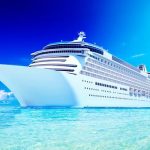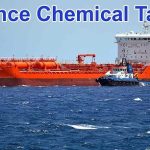A ship has to navigate round the clock through different waters, at times with restriction, with changing weather and sea conditions. Communication has to be maintained during routine voyages, in restricted waters, in emergencies and for rescue operations. Various equipment, instruments, and appliances are provided for performing these functions.
The ship’s bridge serves as a controlling and commanding station for the entire ship. We can control all the machinery, boiler, and ship’s navigation from the bridge. This provides a common platform for the ship’s alarming and controlling station for onboard machinery.
All systems and equipment must meet IMO standards and must be approved by the administration to be installed in the bridge. Electrical and electronic equipment shall be so installed that the electromagnetic interference does not affect proper functioning of navigation systems and equipment. Safety of navigation depends on proper, efficient, and timely use of these aids. All these aids must be checked from time to time for their performance and accuracy. Errors and deviations must be logged. All navigating officers must be familiar with their use.
The common activities carried out on bridge can be broadly grouped as:
· Lookout and avoidance of collision.
· Control of ship’s speed and direction.
· Navigation and position fixing.
· Monitoring weather and sea condition.
· Communication – external and internal.
Ship’s Bridge



Ship’s Bridge Construction Features favorable for Lookouts
Lookout for traffic is maintained from the navigation bridge. During poor visibility and in restricted waters, additional lookout may be maintained form the forecastle or crow’s nest atop the forward mast.
The navigation bridge is situated on the uppermost deck with a clear view of the sea ahead and abeam. It is so constructed that the navigators get clear vision for255o or more. From the conning position, vision should be from 112.5o port to 112.5o starboard. From the bridge wing the vision should be from180o on the wing side to 45oon the other side. The ship’s side should be visible from the wings. View from the steering position should be 60o port to 60ostbd. Obstruction due to deck cranes, masts, etc. should not be more than 10o. Front windows should give clear view without reflections. Windows are inclined 10o-25o. Two clear view screens are provided in front windows for use when the view is obscured by rain.
Binoculars are used for long distance viewing in daytime when the weather is clear. At night or when the visibility is restricted, radar should be used for lookout. Range scale should be selected according to the traffic density, ship’s speed, and distance from the coast. Heading marker should be checked against the compass heading and the ships fore and aft line. It is advisable to use the radar in clear weather also, to check its effectiveness.
Ships more than 10,000 GT and above should have two radars including one operating on X band, 9 GHz frequency. They should have automatic radar plotting aid (ARPA). Smaller ships are fitted with automatic tracking aid (ATA) or electronics plotting aids (EPA).
As per the International Regulations for preventing Collisions at sea (COLREGE -72) the officer on watch must be familiar with these regulations and the indicator lights fitted on the panel for navigation lights. Alarms should also be fitted for the failure of these lights on the bridge panel.
Bridge Equipment


Controlling Ship’s Speed and Direction from Bridge
Ship’s Speed
Every ship should have an indicator for the propeller speed and direction of rotation on the bridge. If the propeller is of controllable pitch, there should be indication of pitch also. On UMS ships, machinery can be controlled from the bridge.
In Integrated Bridge System (IBS), various operations such as passage execution, communications, machinery control, and safety and security are centrally monitored. Engines can be stopped in emergency. Overriding provisions are made in case of main engine.
A telegraph is provided on the bridge for communication with the engine room regarding engine speed and direction. Controls are tested before departure and the engine movements are recorded in bridge. The bridge telegraph may be connected to a teleprinter for automatic recording. Repeaters are provided on the bridge wings.
The speed log shows the ship’s speed in knots, and the distance indicator records distance covered in nautical miles. A calibration chart is provided; these readings should be verified by plotting the ship’s position on the charts.
Direction Controls
The ship’s direction is set by the use of the Standard Magnetic Compass, Steering Magnetic Compass, or Gyrocompass. There should be communication between the standard magnetic compass and the steering position. An efficient periscope with sufficient magnification and adjustability is provided for comfortable viewing of the standard compass by the helmsman. The steering compass must be compared with the standard compass at least once per watch and after every major alteration of course. Deviations are recorded on a card maintained on the bridge. The standard compass should be checked and adjusted when the deviation shows a marked change.
The gyrocompass repeater is fitted at each steering position. An autopilot, set manually, maintains the ship’s course until a new course is entered. When likened to IBS, it can correct cross track errors and automatically keep the ship on the planned track. An off-course alarm is also fitted.
Steering may be manually controlled from the bridge. The steering wheel operates the telemotor transmitter. Rudder angle indicators are fitted at the steering positions. Repeaters are fitted in bridge wing. While testing controls, the rudder angle indicator must be compared with the actual rudder angle.
This section of the article discusses on the Manoeuvrings controls from bridge, weather monitoring systems, and the instruments for navigation like hydro graphic charts, Echo sounder, and Sextants.
Maneuvering Displays on Bridge Control Screen
Maneuvering characteristics are displayed on the bridge. These include propeller R.P.M. and ship’s speed in knots corresponding to full, half, slow, and dead slow ahead positions on the telegraph. Astern power as percentage of ahead power, time change over from full head to full astern, distance to stop from full ahead, time to stop, turning circle at full speed, at maximum rudder angle, in loaded and ballast conditions time to steer from hard port to hard starboard and minimum speed to maintain course.
Both main and auxiliary steering systems must be tried out. Failure alarm and auto start systems should be located in the bridge. Charts showing procedure to change over to emergency steering should be displayed near the steering control.
Alarms Fitted in Bridge
Alarms are provided for failure of main propulsion, machinery, and steering systems. These and the alarms for navigation light failure, off course, radar warning, etc. must be acknowledged by the officer on watch within 30 sec, or the alarm is sounded in cabins, office, and mess for back up assistance.
Navigation Instruments


Navigation and Position Fixing Instruments On Ship’s Bridge

Hydrographical charts are used for navigation and position fixing. The charts should be kept up-to-date as per notice to mariner, issued at regular intervals. Gnomonic charts are used for great circle sailing. An electronic chart display and information system (ECDIS) meets the SOLAS requirements. Other systems may be used as supplementary aids, along with paper charts.
Echo-Sounder
The echo-sounder is used for keeping continuous watch on the water depth in coastal waters. An alarm may be set according to the ship’s requirements to warn about shallow waters. Depths recorded should be compared with those shown on the charts, giving allowance for ships draft and tidal effects. A hand lead is provided on the ship for taking soundings manually in shallow waters.

Sextant

Sextant is the most reliable instrument for taking sights and fixing the position of the ship. However, its use is often restricted in poor visibility. Electronic and satellite positions fixing systems are used on all modern ships.
GPS
GPS and GLOASS are satellite systems for position fixing; GPS (Global Positioning System) gives accuracy of 100 meters.
Weather Monitoring Systems
The world’s oceans are divided in sixteen areas (NAVAREA) for dissemination of navigational and metrological warnings. Warnings are broadcast on radio as per list of radio signals. Weather facsimile recorders receive data from the weather satellite and display the latest weather maps, ice charts, and other forecasts. This helps in modifying the ship’s routes as the voyage proceeds, to minimize the effects of bad weather.

Routing and Reporting

In coastal waters, ships must use routing systems approved by governments. Governments have established vessel traffic system (VTS), designed to contribute to safety of life, safety, and efficiency of navigation and protection of marine environment and adjacent areas. VTS is mandatory within territorial waters only.
Automatic Identification systems (ASI) are a system to transmit/ receive the information on ships, name, position, course, speed, destination, cargos etc. by digital radio technology for the ships in objective area. It should be in operation at all times. It is use full in collision prevention, searches and rescue, or operation of VTS.
So this is the equipment normally placed on the bridge, and there are some further controls provided in UMS (Unmanned Machinery Space) ships as the machinery and boiler controls can also be controlled from the bridge.


